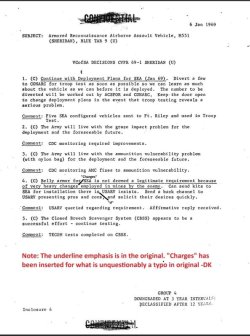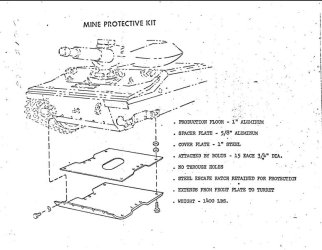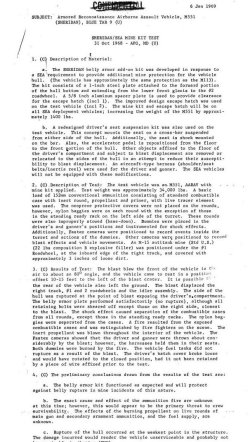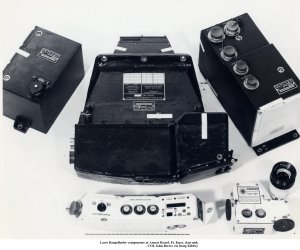This interesting document further reveals the cavalier nature of AMC’s attitude with regard to crew protection in the M551 Sheridan. On request, an add-on mineplate kit had been developed for the M551 as deployed in Vietnam. The kit added 1400 lbs and it was concluded based upon empirical testing that it would contribute toward preventing hull rupture specifically. Fire, secondary to a detonation was the immediate risk to the dummy occupants of the test vehicle. The dummy’s had benefited from restraining harnesses developed for the M551 but not installed on production vehicles. They were not subjected to the same accelerations of the floor unrestrained, referred to as blast displacement.
In large anti-vehicular mine explosions such as those in Vietnam, where the average mine was 30lbs or greater, one of the mechanisms of casualty-causing injuries is the result of the accelerations of the floor of your vehicle coming up to meet you at great speed (“blast displacement” in the memo). The test was conducted with a 22lb, charge. This combination of factors perhaps led to the conclusion that mine plates for Vietnam-bound M551’s were not advisable. Their reference to the large “charges” in use, (which I believed suffered a typo in the document), seems to have led to a conclusion that in view of the severe damage that can be expected, a mine plate will be of little difference to crew survivability. (Even if hull rupture is prevented, the “blast displacement” will kill you anyway). Note that even with a “mere” 22 lb charge, the M551 in the test may have been blown completely clear of the ground.
The proposal, if USARV insisted on the kits, was to have them sent to SEA for installation. Before the document could even be distributed, USARV confirmed that they indeed wanted the kits. Notice that decisions had been run by the Vice Chief of Staff of the Army, who had been called upon to "referee" Sheridan acceptance and deployment.
I've combined two messy pages into one. Both memos can be more easily read if downloaded and magnified with your photo viewer.
In large anti-vehicular mine explosions such as those in Vietnam, where the average mine was 30lbs or greater, one of the mechanisms of casualty-causing injuries is the result of the accelerations of the floor of your vehicle coming up to meet you at great speed (“blast displacement” in the memo). The test was conducted with a 22lb, charge. This combination of factors perhaps led to the conclusion that mine plates for Vietnam-bound M551’s were not advisable. Their reference to the large “charges” in use, (which I believed suffered a typo in the document), seems to have led to a conclusion that in view of the severe damage that can be expected, a mine plate will be of little difference to crew survivability. (Even if hull rupture is prevented, the “blast displacement” will kill you anyway). Note that even with a “mere” 22 lb charge, the M551 in the test may have been blown completely clear of the ground.
The proposal, if USARV insisted on the kits, was to have them sent to SEA for installation. Before the document could even be distributed, USARV confirmed that they indeed wanted the kits. Notice that decisions had been run by the Vice Chief of Staff of the Army, who had been called upon to "referee" Sheridan acceptance and deployment.
I've combined two messy pages into one. Both memos can be more easily read if downloaded and magnified with your photo viewer.




